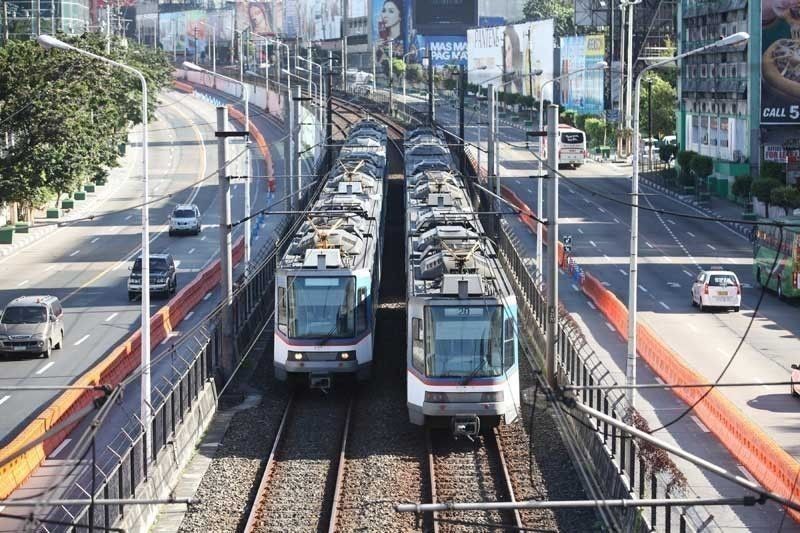Commentary: Tracking the metro rail trains

The MRT-3 is almost two decades old. The glitches and malfunctions that this metro rail system continues to suffer are symptomatic of the need to undertake serious rehabilitation and repairs.
Last September 6, the said metro rail only resumed regular operations at 5 p.m. after the northbound lane of the Guadalupe station suffered from a power supply problem at 6:45 a.m. Partial operations were however continued at 9:35 a.m.
On October 3, another power glitch forced 508 passengers to disembark at 10:17 a.m.; but normal operations continued several minutes after power supply was returned. And on November 4, around 530 passengers were unloaded from the train after smoke emission was detected at the Santolan station at 4:08 p.m. Normal operations were restored at 6:06 p.m.
In 2017, hundreds and thousands of commuters were affected by more than 500 recorded glitches and malfunctions. This is unacceptable by any standard and underscore the public’s continuing aspiration for an efficient and reliable rail based systems for efficient daily transport of millions of commuters of Metro Manila
Despite serious delays in the rehabilitation schedule, the Department of Transportation rail sector led by Undersecretary Timothy John Batan is optimistic that MRT-3’s rehabilitation and maintenance provider, Sumitomo-Mitsubishi Heavy, will be able to deliver on its commitment to carry out extensive repairs to all rolling stock and equipment in order to restore the MRT-3’ s safety and efficiency.
Aside from the external risks brought by the Philippine government’s insistence on using the Dalian coaches, rehabilitation would include ensuring high operating rates of entire line even after the repairs are finished.
In fact, the MRT-3’s rehabilitation plan includes repairs covering the rail lines, wiring, transformers, signals, communications, rolling stock, among others. Basically, the ultimate objective of the rehabilitation is to return the MRT-3 to its original state when it first went into full operation in 2000.
Meanwhile, there is a new controversy on the DoTr’s flagship rail project, the Metro Manila Subway. Senate Public Services Committee Chair Grace Poe has sought an inquiry on the country’s first underground rail service, due to cost concerns and the alteration of original plans.
The Quezon City Council led by Councilor Winston Castelo raised concerns related to the proximity of the subway to the West Valley Fault, and proposed a rerouting of the subway alignment along EDSA.
However, no less than Transportation Secretary Arthur Tugade had dismissed all possibility that the subway alignment may be changed. “The alignment will not be changed anymore because the study has already been approved. At a certain point, if there are solutions that we can use, we will study them,” he said.
In fairness to the DoTr, the approved subway proposal was the result of a thorough study by the Japan International Cooperation Agency (JICA) and validated by country’s state planning agency, the National Economic Development Authority.
The subway will connect different Metro Manila cities, from Quezon City in the north to Parañaque in the south, which would definitely address the transportation needs of a growing public and alleviate serious traffic congestion in Metro Manila.
In fact, the subway project is envisioned to be one of the main north-south transport backbones of Metro Manila, together with other upcoming rail projects such as the North-South Commuter Railway project (NSCR).
Courtesy of Japan, the Philippine government in March 2018 signed the first loan agreement from JICA covering 104.53 billion yen (P51 billion). The total project cost is estimated at 800 billion yen (P393 billion). The loan will have an interest rate of 0.1% a year and a repayment period of 40 years, including a 12-year grace period.
The subway trains are projected to travel at a scheduled speed of 35.6-48.5 kilometer per hour plying a tunnel structure that is designed as a double, single track with a standard diameter of 6.8 meters. Further, the joint DOTr-JICA project summary also provided that the planners have studied alternate routes, namely, along Metro Manila’s main road Edsa and Greenhills in San Juan. Lastly, the final alignment was chosen based on project cost, demand forecasts, connectivity to business districts, earthquake and flood risk as well as noise and vibration.
Another critical factor in the development of this subway project is to ensure that all money spent for undergoes the right processes, particularly related to right-of-way acquisition.
As the country’s first underground rail service, affected property owners along the subway alignment may be uncertain of their legal rights in the event the project tunnels through their properties. In this respect, the DoTr is expected to conduct and present a legal study defining these novel types of property rights which will certainly come to the fore as subway construction starts.
The Metro Manila subway will span 35 kilometers with stations in Mindanao Avenue, Tandang Sora, North Avenue, Quezon Avenue, East Avenue, Anonas, Katipunan, Ortigas North, Ortigas South, Kalayaan Avenue, Bonifacio Global City, Cayetano Boulevard, the Food Terminal Inc. complex and NAIA.
Current Philippine infrastructure challenges portend strategic developmental opportunities that government and private sector should jointly seize. It is hence imperative for government to initiate and implement effective collaborative partnerships. We just have to do it right.
Terry Ridon is fellow for Infrastructure of the Stratbase ADR Institute, convenor of Infrawatch PH, and former chairman of the Presidential Commission for the Urban Poor. He was a member of the House Transportation Committee of the 16th Congress.
- Latest























